Fisher's soldiers are always doing something, his tanks and vehicles are always going somewhere, his vessels are always sailing resolutely towards shore. Obstacles exist to be overcome. This steady determination to move forward characterizes his history as a war artist.
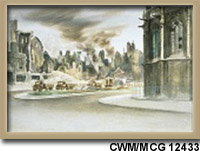
|
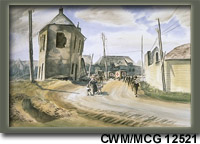
|
| Caen, July, 1944 | Heading for Front Lines |
As an artist, Fisher worked tirelessly. Countless detailed sketches in the Canadian War Museum demonstrate that he earned his position as one of Canada's notable war artists through hard work. Innumerable detailed studies of hands, of equipment, and of dress attest to an ongoing apprenticeship with the material of war that was to stand him in good stead when he landed in France on D-Day and was compelled to work quickly and accurately in order to capture the action.
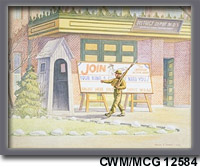
|
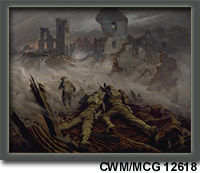
|
| Recruits Wanted | Stormont, Dundas and Glengarry Highlanders Advancing into Caen |
His best painting is probably the unusual work Battle for Carpiquet Airfield. Here he combines his preferred grouping of soldiers on the move with an overarching, cathedral-like panoply of twisted metal. More than any other of his compositions, it shows an artist who has moved beyond the mere documentary to a true engagement with his creative gifts.
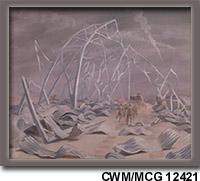
Battle for Carpiquet Airfield
Battle for Carpiquet Airfield is an exception to Fisher's usual work. During the six years he worked as a war artist, Fisher largely rejected experimental art forms in favour of painting from the perspective of the ordinary soldier.
These are the works veterans most admire, and it is probably through Fisher's paintings more than those of any artist, that they can best relive their own experiences. For this reason alone, his war art remains an enduring achievement.

|
|